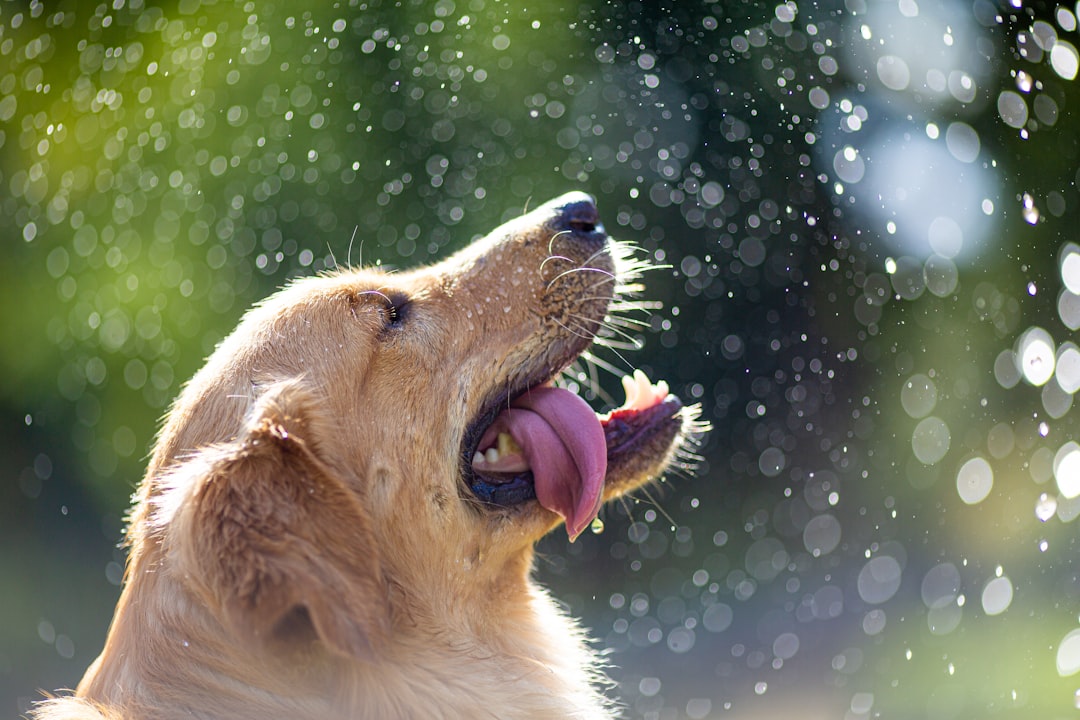If you’re a dog owner, I’m sure that keeping your dog’s coat clean is one of your responsibilities. Dogs also feel happy when they look presentable which means that a groomed coat is also a symbol of well-being. Besides regular grooming sessions and baths, dog owners should consider using a high-quality dog conditioner.
Dog coat conditioners can help hydrate the skin and fur of your dogs. It can also make it less tangled and reduce shedding. In this guide, we will look at the benefits, types, and directions on how to use them as well as suggestions to make your own homemade conditioners for dogs.
Benefits of Using a Dog Conditioner
The use of dog conditioners, just like pet grooming, enables users to enhance the look and comfort of their animals. The following are some benefits associated with dog conditioners.
1. Improved coat moisture and damage prevention
Dog conditioners promote moisturized and damage free fur while keeping it soft, shiny, and smooth. With a dog conditioner, owners can enhance their dog’s coat by making it glow with hydration. For breeds with longer coats or denser fur, this feature is crucial.
2. Detangling
For longhaired and curly coated dogs, tangles and mats can be troublesome (and sometimes painful). Conditioners soften the hair, which decreases friction and makes it easier to comb through knots, preventing mats from forming.
3. Moisturizing the Skin
Allergies to some dog fur types may lead to dry, flaky skin, which can be uncomfortable and itchy and may lead to an infection. Conditioners with skin moisturizers can take care of such problems by providing the required skin nourishment and helping to relieve the dryness.
4. Reducing Shedding
A well hydrated coat sheds less, which means less fur on the floor and furniture. Regular use of a conditioner strengthens hair follicles which reduces the amount of fur shed on a daily basis.
5. Odor Control
Mild animal safe fragrances are put into some dog conditioners to help in keeping pets smelling fresh in between baths.
Adding the right product such as conditioner, pets can enjoy softer fur, itch free skin, and significantly improved comfort.
Kinds of Conditioners For Dogs
There is no shortage of options when it comes to choosing conditioners for dogs. Below are some of the most popular types and their purposes:
1. Rinse-Out Conditioners
These are the most widely used conditioners and are applied after the dog is shampooed. Rinse-off conditioners are used during the dog’s washing routine and kept in for a specified time before they are thoroughly washed out. Mostly Ideal for general coat upkeep.
2. Leave-In Conditioners
Leave-in conditioners are great for tangles and frizzy hair. As the name suggests, these conditioners stay in the hair for a longer period and do not require rinsing; therefore making it perfect in between washes. Especially important for those long-haired breeds that are prone to mats because of their fur.
3. Medicated Conditioners
Medicated conditioners are ideal for dogs with certain allergies or skin disorders. These conditioners usually have active ingredients that calm skin problems like oatmeal, aloe vera, and antiseptics. Focuses on issues like itchiness and inflamed skin, alongside infections from harmful bacteria.
4. Specialty Conditioners
Tailored to particular requirements like gentle conditioners for fragile pets, ones made to decrease excessive shedding, or those meant for enhancing the colors of dark and white fur.
Every dog has different needs, so you should consider your dog’s coat type when picking a conditioner for them. For instance, a golden retriever might need a medicated formula to help with itching, while a poodle could benefit from a leave-in detangling conditioner due to their thick, curly fur.
Choosing The Best Conditioner For Dogs
Keep in mind that not dog conditioners are the same. Let’s go over a few helpful tips that can make the search easier, be it for a puppy or older dog.
1. Look At Product Ingredients
Make sure the dog and breed are safe to use the product. Check the label for dog-friendly ingredients like Aloe Vera, coconut oil, and shea butter. Also avoid sulfates, parabens, and artificial fragrances, as they are harmful.
2. Consider The Dog’s Breed
Another important aspect to take into account is the breed of the dog. Dogs with short hair might not require deep conditioning, while long coated breeds tend to need extra help with tangles.
3. Specific Problems
If your dog has allergies or even sensitive skin, go for hypoallergenic or medicated conditioners. It’s best to always ask a vet for advice when it comes to these problems.
4. Choose Trusted Brands
Stay with good brands that deal with pet grooming. You can check their website and also talk to your vet to help you decide.
If you are unsure, try a small amount of the dog conditioner on the neck area first to see if there are any allergic reactions.
Applying Dog Conditioner Correctly
When using a dog conditioner, it is easy as long as the following is done.
1. Shampoo First
Using a dog-friendly shampoo, give your pet a bath to get rid of any possible dirt and grease lodged in its coat.
2. Apply Conditioner
Work the conditioner into the pet’s coat, especially on the tail, belly, and behind the ears, which tend to dry or get matted, with greater care.
3. Allow Time to Work
Let the dog fur absorb the nutrients in the conditioner for two to five minutes.
4. Rinse Thoroughly
All dog conditioner should be washed away to prevent residue that may irritate or cause product build-up.
5. Dry and Brush
Using a towel, dry the dog. After towel drying, brush the dog to smooth its coat and make sure it is untangled.
A conditioner should be applied to a dog’s fur at around four to six-week intervals and is best done during baths.
Common Issues
Commonly, pets and sensitive fur will raise concerns when it comes to a dog conditioner regarding grooming routines—some issues are presented here along with solutions:
1. Allergic Reactions
If your dog has sensitive skin, it is recommended to do a patch test beforehand. Do not use fragrances or conditioners that have artificial elements.
2. Overuse
Overconditioning can lead to clogged pores, causing the dog’s fur to become unmanageably heavy and greasy. Stick to the use schedule.
3. Mats and Tangles
The use of dog conditioner cannot help if the degree of tangles is extreme. Work your way through tangles slowly using special de-matting tools, along with a detangling spray.
Using proper methods and products, you can meet both groomer’s and your pet’s preferences!
Homemade Dog Conditioner
You might want to combine a few natural ingredients to make your own doggie conditioner providing a soothing experience! Here’s how to get started:
Moisturising Oatmeal Conditioner
• 1 cup of oats (ground into powder)
• 1 tablespoon of coconut oil
• 4 cups of warm water
You should blend all the provided ingredients and place them in a bowl. Massage into your dog’s coat. Rinse with water after 5 minutes.
This will definitely suit your dog who has dry and flaky skin because this dog conditioner is not made using harsh chemicals.
Tips for a Healthier Dog Coat
Dog coat condition is also a reflection of general well being of the pet. Therefore, for general grooming make sure to use some good quality dog conditioner.
You get most of the advantages from dog conditioners such as dematting and moisturizing. Implementing proper usage instructions will ensure you get great results.
Provide your dog with a sleek head turning silky coat that is well-nurtured.



